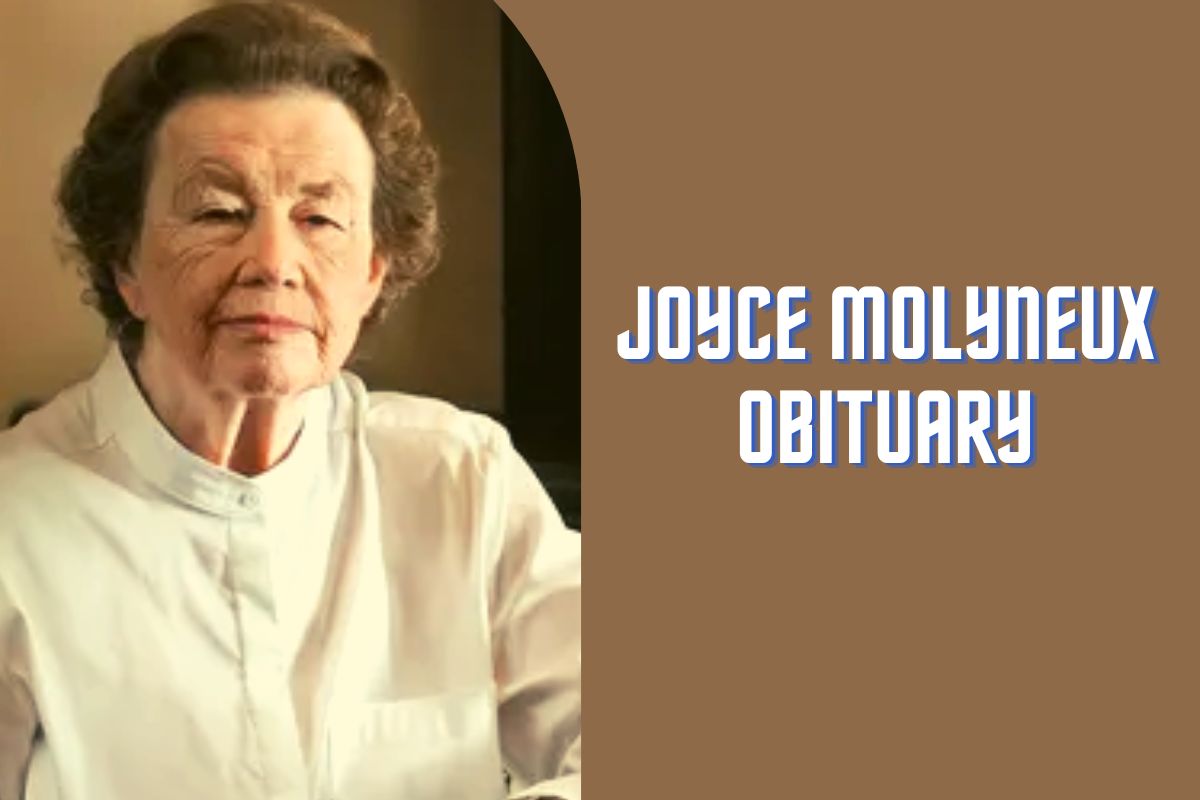Joyce Molyneux, a chef and restaurateur who died at age 91, was respected by almost everyone in her field and by people who cooked at home and went out to eat. A big part of this was because she was humble and friendly and never tried to act like she was better than anyone else. Her cooking style tasted like heaven, but anyone could make it. Even though her career can be summed up by the fact that she worked in just three provincial restaurant kitchens—learning the ropes at the Mulberry Tree in Stratford-upon-Avon in the 1950s, at the Hole in the Wall in Bath in the 1960s, and then for 25 years at the Carved Angel in Dartmouth—her actions had an effect on a much larger church.
In 1978, she was one of the first women chefs to get a Michelin star. Her kitchens were open and could be seen from everywhere in the restaurant. Even though the 1980s were a wild time, the kitchens were never messed up by bad behaviour. She took a stand early on for using local ingredients in creative ways. In a picture from 1984, Joyce and her small staff stand in front of three dozen suppliers, all of whom are from within a five-mile radius.
People often said that her food was “heartwarming,” “reassuring,” or “honest.” These qualities made people like her, especially since they never took away from the taste or flavour. Even though she didn’t want to be a feminist leader and had many male lieutenants in her last decades at the stove, she might have been seen as one because most of her staff and assistants were women who went on to have successful careers.
From 1959 to 1972, she worked at the Hole in the Wall, which George Perry-Smith started. During that time, her (and his) cooking was significantly linked to Elizabeth David’s books, which began in 1951. Neither of them would say that David didn’t affect them, but the truth is that they read a lot more than just David. When Joyce moved to the Carved Angel in 1974, another brilliant writer, Jane Grigson, was included as a mentor. This connection was still talked about. Still, Joyce would not have denied that she liked Grigson.
But these three women were joined at the hip by more than just recipes. They shared a style of cooking that was refined and respectful of the area but never gave up on adventure or, most importantly, taste. Joyce was so popular with home cooks and the tens of thousands of people who ate at her tables. Even though Joyce was rarely in the news, her Carved Angel Cookery Book, which she wrote with Sophie Grigson’s daughter in 1990, did well.
Recent post-
Joyce was born in Handsworth, which is near Birmingham. She was the middle child of Irene (nee Wolfenden) and William Morris Molyneux, who worked as an assistant chief chemist for the scale-making company W&T Avery. Her father’s Christian name may show what he thinks about politics. As war loomed in 1939, the three children were sent to Worcestershire to live with a family of three girls. Joyce went to the Ombersley primary school, and when she was 11, she went to the Birmingham King Edward VI grammar school for girls, which had also been sent to Worcestershire at the same time. In 1943, she went back to Birmingham.
When she was 16, she dropped out of school and said she wanted to learn how to cook. She was sent to the Birmingham College of domestic science. She remembered that it was run by a “Scottish mafia” and that the standard text was the Plain Cookery Recipes of 1907 from the Edinburgh School of Cookery and Domestic Economy (they also studied Recipes for High-Class Cookery, not a lot of use during postwar rationing). Her first job was to make “brown stew” in tiny amounts. During a school exchange with St-Dié des Vosges in the east of the country, she may have been exposed to French home cooking, which may have made her think of more options (she later remembered the oeufs à la neige).
After she left college, where she had to retake her cooking test, her father found her a job in the canteen at W. Canning & Co., which made electroplating equipment. A fellow student told her about a possible job at the Mulberry Tree in Stratford. The chef, who worked alone, hired her as a general assistant in 1951. Douglas Sutherland was a classically trained chef who was highly regarded. Over the next eight years, he taught Joyce everything she needed to know to be a professional cook. It was good enough for her to teach Perry-Smith, a beginner, a few things when she joined him at the Hole in the Wall.
In 1959, when there was a change of government in Stratford, she saw an ad in the Lady magazine for jobs at this restaurant in Bath. Her application was accepted, and it didn’t take her long to figure out that this wasn’t a regular business. Perry-Smith dressed like a bohemian and had a strong presence. He made his staff work both in the kitchen and the front of the house, which Joyce, who was very shy, thought was hell. Perry-Smith also made generous and full of spirit food but didn’t follow the rules of classical cuisine.
Most of the staff were young, middle-class women who saw it as a place to finish their education. But they worked hard all the time, and there was a lot of team spirit. Joyce got through the time she had to wait at the table and focused on the kitchen. Here, she soon took charge most of the time. As time went on and Perry-Smith became more of a leader, she was offered a junior partnership with Heather Crosbie, who would become George’s fourth wife. When the restaurant was sold in 1972, it was thought that she and her two business partners would start something new together.
In the end, this turned out to be two new businesses: a restaurant with rooms in Helford, Cornwall, run by George and Heather, and a place in Dartmouth, Devon, with amazing views of the mouth of the river and soon-to-be-called the Carved Angel. Joyce was in charge of the kitchen, and I, Perry-stepson, Smith’s, was in the order of the front of the house. I worked there until 1984. After a year or two, Joyce was joined by Meriel Matthews, George’s niece. From then until she retired, she had a hot, profitable, and satisfying business relationship with Meriel.
Also, check-
- Vanessa Marcotte Obituary: What Was Her Cause of Death?
- Jerry Lee Lewis Obituary: Is He Dead or Still Alive?
In terms of business, the early years were never easy: many winter nights had no customers. But as life in the country sped up in the 1980s and Joyce got some TV exposure on the show Take Six Cooks in 1986, as well as praise and awards from guides and critics, business started to get better, even for such a small restaurant. Doubtless ran the restaurant, and Joyce grew into her role with ease and style. Even in Dartmouth, a tiny town, her work was not looked at with suspicion (“Such prices! “) but with pride.
She moved back to Bath in 1999, but she would make “state visits” to Dartmouth every other year, coinciding with the town’s autumn food festival. She never stopped cooking, and we always looked forward to the Christmas package of jams, pickles, and preserves she sent us. She also didn’t lose her reputation, which was often due to the respect of her former assistants, who are now in important positions in the food world. In 2017, she won the Observer Food Monthly’s award for lifetime achievement, a fitting way to honour her.
Stephen Rodrguez-Garca was a waiter from Barcelona who worked at the Mulberry Tree when Joyce met him in 1959. They were partners through thick and thin until he died in 1994. They often worked in different towns and only saw each other on days off, but they always took vacations together in Spain, where Stephen built a house by the sea in Cubelles, southwest of Sitges. Except for her great paellas and the rare dish she made with sauce romescu (long before it became popular), her cooking didn’t show this connection.
Philip, her younger brother, and several nephews and nieces will miss her.
Joyce Molyneux was born on April 17, 1931, and she died on October 27, 2022.
Stay connected with lakecountyfloridanews.com for the Latest News.




